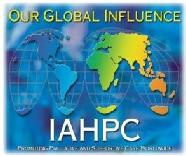|

|
| |
Shirley died today. A senior nurse, much respected, but only 61. A long-serving member of the team on our Oncology/Palliative Care ward. Killed instantly on her way
to work by someone trying to overtake a truck. We, who deal with life-threatening illness and death every day, collectively struggled with our grief. Perhaps a timely reminder of how great the needs
of grieving relatives can be.
This little book is written to help bring comfort and peace to some of those who grieve. It was written by a nurse who lost both her mother and father to illness in
the space of thirteen days. It comprises a mixture of poems, prose and Biblical quotations. Devoutly Christian, this book may not be for everyone, but it will certainly be helpful to some.
David Kessler describes this book as “one made up of a little psychology, a little medicine, and a little spirituality,
mixed with a whole lot of love”, written to familiarize the reader with the physical and emotional aspects of dying. It is written both for those who are dying and for those who love them
and care for them. Chapters cover allowing people to live until they die, the expression of emotions, participating in decision making, the management of physical pain, emotional pain and spirituality,
how to help children when a parent is dying, and the physiology of the dying process. There are hundreds of illustrative anecdotes throughout the text, which bring it to life and to which the reader
can relate. Kessler’s style is clear and easily understood. If patients or carers ask you, tell them to buy this inexpensive but invaluable book, which is so full of information, comfort and
love.
This is the report of the National Cancer Policy Board of the Institute of Medicine and National Research Council on how the provision of palliative
care for patients with cancer might be improved. It examines in detail the barriers that prevent many people from receiving effective palliative care where and when they need it. It makes a series
of recommendations, both at professional and governmental levels, to improve the system. Whilst describing the situation in the United States, the problems and the principles of the recommendations
are universal.
Part II of the report consists of commissioned background papers that examine economic issues, quality indicators, the availability of information, special
populations, clinical practice guidelines and professional education, all written by leaders in the field.
This is an excellent summary of the interface between Oncology and Palliative Care and how the situation should and can be improved. At a professional level,
it leaves one to ponder the quality of care that is being delivered, and it should be required reading for anybody involved in policy making in this field.
This book aims to provide a practical guide to nerve blocks and neuromodulation (techniques such as spinal drug delivery or spinal cord stimulation) so that
palliative care professionals can make informed decisions about which patients are appropriate to refer for specialized treatment.
Overall, there is a clear, concise description of the various procedures including indications, contraindications and adverse effects. However, I was a little
surprised to see that coeliac plexus blocks have to be performed under deep sedation or general anaesthesia, making it an unattractive option for frail or debilitated patients in palliative care;
where I work, the blocks are done by the interventional radiologists under CT-control, without general anaesthetic or sedation, with an appropriately good response rate and, so far, without mishap.
I also thought that intracerebroventricular injection of opioids deserved more discussion. It is mentioned only once in passing as an alternative for intractable pain in the head. Whilst the published
series were not prospectively controlled, there is now a body of evidence that this technique may be useful for intractable pain, including that outside the head and neck. And whilst I am carping,
the repeated use of “co-aggulopathy” is annoying and sounds painful.
This book meets its objective of providing the information needed for palliative care professionals to know what to expect of the various interventional techniques. But it would
have been even better if there were some discussion of the different options that are available for treating common pain syndromes in a given patient. For example, unilateral arm pain due to malignancy
is listed as a specific indication for a brachial plexus block. But what are the alternatives? Epidurals? Spinal opioids? My criticisms aside, this is a very useful text and definitely deserves
a place on the palliative care unit bookshelf.
Roger Woodruff
Director of Palliative Care, Austin Health, Melbourne, Australia
(December 2004)
|
| |
|
|
  
|
|





